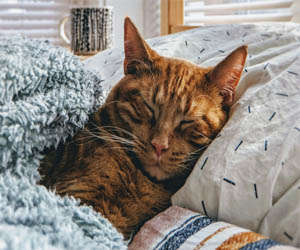



The enigmatic realm of the human mind has captivated scientists, philosophers, and seekers of knowledge for centuries. Within this intricate labyrinth lies the concept of hypnosis, a phenomenon that has intrigued and mystified individuals across time and cultures. Often portrayed in pop culture as a tool for mind control or theatrical spectacle, the true science of hypnosis delves deeper, unveiling a fascinating exploration of the subconscious mind's potential. This journey into the realm of hypnotism unveils the power of the mind to shape perceptions, alter behaviors, and unlock hidden reservoirs of knowledge.
At the heart of hypnosis lies the power of suggestion. It's a process where a person, often referred to as the hypnotist, guides the subject into a state of heightened suggestibility. In this altered state of consciousness, the mind becomes more receptive to the suggestions presented. While under hypnosis, individuals can experience changes in perception, thought, and behavior, all driven by the power of the suggestions they receive.
The power of suggestion in hypnosis has been harnessed for various purposes, from therapeutic applications to personal development and even entertainment. In therapeutic contexts, hypnotherapy utilizes the suggestive power of hypnosis to help individuals overcome challenges like smoking cessation, weight loss, phobias, and anxiety. By planting positive suggestions in the subconscious mind, hypnotherapists can reframe negative thought patterns and promote healthier behaviors.
One of the most intriguing aspects of hypnosis is its ability to unlock hidden reservoirs of knowledge within the subconscious mind. Often, people report vivid memories and recollections while in a hypnotic state, memories that were seemingly buried in the depths of their minds. This phenomenon has been utilized in forensic psychology, where hypnosis has been used to help witnesses recall details of past events, potentially aiding criminal investigations.
The power of suggestion in hypnosis is closely tied to suggestibility, which varies from person to person. Some individuals are highly suggestible and easily enter a trance-like state, while others may require more effort to achieve the same level of suggestibility. The process of assessing and tailoring suggestions to an individual's unique needs and characteristics is a crucial skill for a hypnotist.
Moreover, the ethical considerations surrounding the power of suggestion in hypnosis cannot be understated. The potential for abuse or the implantation of false memories has raised concerns in the field. Therefore, reputable hypnotherapists adhere to strict ethical guidelines to ensure that the power of suggestion is used responsibly and ethically.
The power of suggestion in hypnosis is a captivating and multifaceted aspect of the human mind. It has profound implications for personal growth, therapeutic interventions, and even the realm of memory recall. While it may have been shrouded in mystery and misconception, a deeper understanding of hypnosis and the power of suggestion offers a fascinating glimpse into the untapped potential of our subconscious minds. Whether you're exploring hypnosis for personal development or seeking relief from a persistent issue, this age-old practice continues to demonstrate its potential to shape perceptions, alter behaviors, and unlock the mysteries within.


 The Importance Of Proper Litter Box Habits:
The Importance Of Proper Litter Box Habits:
Litter boxes are more than just a convenience for cat owners; they are a fundamental aspect of a cat's daily routine. Proper litter box habits are crucial for several reasons:
Hygiene: A clean litter box prevents the buildup of waste, which can lead to odors and bacterial growth. Regular cleaning is essential to maintain a hygienic environment for both your cat and your household.
Mental Health: Cats are naturally clean animals and may become stressed or anxious if their litter box is not up to their standards. Maintaining a clean box contributes to your cat's mental well-being.
Preventing Accidents: A cat that doesn't have access to a clean and properly placed litter box may resort to urinating or defecating in inappropriate places, such as on your furniture or floors.






A Guide To Feline Bliss
 2. The Perfect Nap
2. The Perfect Nap
Cats have mastered the art of napping, and it's a vital ingredient in their happiness. On average, cats sleep 12-16 hours a day, and some even more. These catnaps rejuvenate their energy levels and keep them alert when they're active. Providing a cozy, quiet spot for your cat to rest is essential for their well-being and happiness.
3. Playtime And Stimulation
Cats are playful creatures, and engaging in interactive play is crucial for their happiness. Toys, feather wands, laser pointers, and puzzles all contribute to mental and physical stimulation. Playtime satisfies their natural hunting instincts and provides them with the joy of chasing and pouncing.
4. Grooming And Hygiene
A cat's secret to happiness lies in their meticulous grooming routine. Regular self-grooming keeps their fur clean and helps regulate their body temperature. As cat guardians, we can aid in their happiness by providing the occasional brush to reduce shedding and prevent matting.
5. The Magic Of Purring
The sound of a cat's purring is often associated with contentment and relaxation. Cats purr when they're comfortable, happy, and even when they're in pain, as a self-soothing mechanism. Understanding and responding to their purring can enhance their happiness.
The Enigmatic Realm Of The Sleeping Mind
 Conscious Awareness In Dreams: Dream consciousness is the state of being aware of one's surroundings, thoughts, and emotions while inside a dream. It's a remarkable phenomenon where the dreamer realizes that they are, in fact, dreaming. This awareness can vary in intensity from a vague sense of strangeness to a complete understanding that the dream is not reality.
Conscious Awareness In Dreams: Dream consciousness is the state of being aware of one's surroundings, thoughts, and emotions while inside a dream. It's a remarkable phenomenon where the dreamer realizes that they are, in fact, dreaming. This awareness can vary in intensity from a vague sense of strangeness to a complete understanding that the dream is not reality.
Lucid Dreaming: Lucid dreaming represents the pinnacle of dream consciousness. In a lucid dream, individuals are not merely aware that they are dreaming, but they can actively participate in and control the dream's narrative. This state allows for incredible creativity, problem-solving, and self-exploration within the dream.
The Interface Of Sleep And Wakefulness: Dream consciousness blurs the boundaries between sleep and wakefulness, making it an area of interest for researchers and philosophers alike. It challenges the notion that consciousness is solely linked to wakeful states and suggests that the mind can maintain a form of awareness even in the depths of sleep.
Emotional Depth In Dreams: Dream consciousness often allows for heightened emotional experiences in dreams. This can be both a blessing and a curse, as it enables the joy of living out one's fantasies but also the distress of nightmares and traumatic dreams. These emotional dream states offer a unique perspective on the inner workings of the human mind.
Theories On Dream Consciousness: Several theories attempt to explain the phenomenon of dream consciousness.
Transforming Trash Into Valuable Resources
 2. Biomass-To-Biofuel Conversion
2. Biomass-To-Biofuel Conversion
Biomass, including wood, crop residues, and dedicated energy crops, can be converted into biofuels through various processes such as pyrolysis, gasification, and biochemical conversion. Pyrolysis involves heating biomass in the absence of oxygen to produce bio-oil, which can be further refined into transportation fuels. Gasification converts biomass into a synthesis gas that can be used to produce fuels like ethanol and synthetic diesel. Biochemical conversion uses enzymes and microorganisms to break down biomass into biofuels like ethanol and biodiesel.
3. Plastics-To-Fuel Technologies
Plastics, which are notoriously challenging to recycle, can be transformed into valuable fuels using pyrolysis and depolymerization methods. Pyrolysis breaks down plastics into liquid fuel, gas, and char, which can be used as fuel or chemical feedstocks. Depolymerization processes chemically break down plastics into their constituent monomers, which can then be used to produce new plastics or fuels.
4. Municipal Solid Waste-To-Energy (MSW-To-Energy)
Municipal solid waste (MSW) is a diverse mixture of materials, and waste-to-energy facilities can convert this waste into electricity and heat through incineration or gasification. Incineration burns the waste at high temperatures, producing heat that is used to generate electricity. Gasification converts MSW into a synthesis gas that can be used for electricity generation or further refined into transportation fuels.
5. Algae-Based Biofuel Production
Algae-based biofuel production is an emerging waste-to-fuel method that harnesses the rapid growth of algae. Algae can be cultivated in wastewater or on non-arable land, and they capture carbon dioxide during growth. This biomass can be processed to produce biofuels like biodiesel and biogas, providing an eco-friendly solution for waste management and clean energy generation.
Challenges And Considerations
While waste-to-fuel generation methods hold great promise, they are not without challenges. These include technical and economic barriers, ensuring sustainable feedstock supply, and addressing concerns about emissions and environmental impact. Careful planning, innovative technologies, and sound regulations are essential to maximize the benefits of these methods while mitigating potential drawbacks.
 Reality Checks: To enhance dream manipulation skills, individuals often perform reality checks throughout the day. This practice involves questioning the state of reality by examining one's surroundings, body, or reality itself. When this habit carries over into the dream state, it can trigger lucidity.
Reality Checks: To enhance dream manipulation skills, individuals often perform reality checks throughout the day. This practice involves questioning the state of reality by examining one's surroundings, body, or reality itself. When this habit carries over into the dream state, it can trigger lucidity.
Setting Intentions: Before falling asleep, dream manipulators set specific intentions for their dreams. This might involve deciding to confront a fear, explore a particular scenario, or engage in creative problem-solving. The subconscious often responds to these intentions during the dream.
Mnemonic Induction Of Lucid Dreams (MILD): MILD is a technique that involves repeating a mantra or affirmation before sleep, such as "I will become aware that I'm dreaming." The act of self-suggestion increases the likelihood of becoming lucid within the dream.
Visualization: Visualization techniques are powerful tools for dream manipulation. By visualizing a desired dream scenario before falling asleep, individuals can increase the chances of experiencing that scenario in their dream.
Dream Incubation: Dream incubation is a technique in which individuals set a specific question, problem, or scenario they want to explore in their dreams. By focusing on this intention, they guide their dreams in the desired direction.
Character Interaction: Skilled dream manipulators can engage with dream characters, initiating conversations or activities that lead to new experiences and insights within the dream.